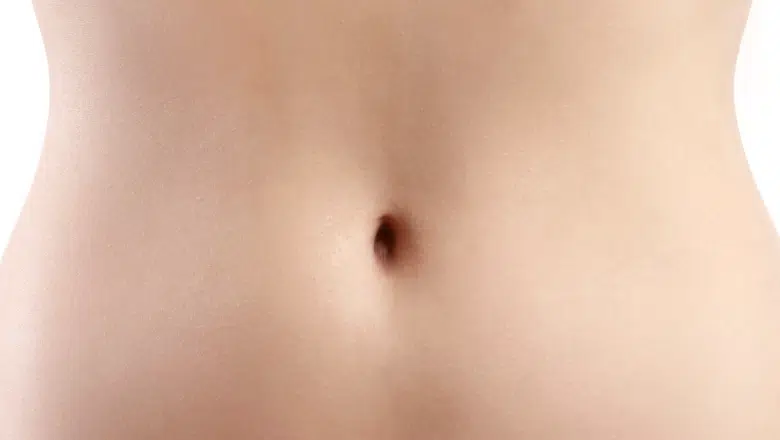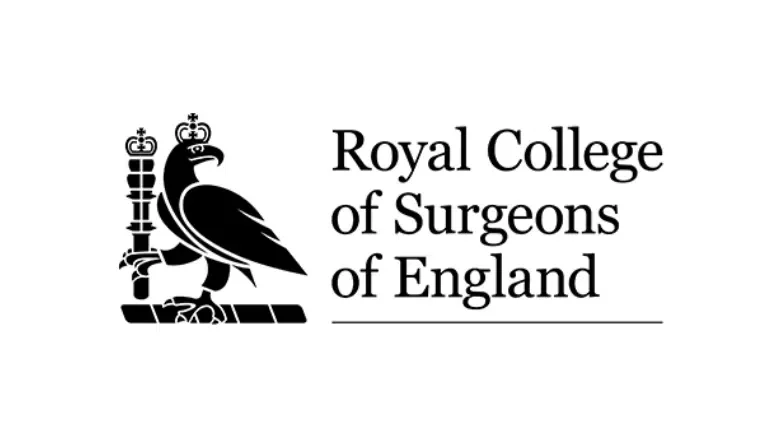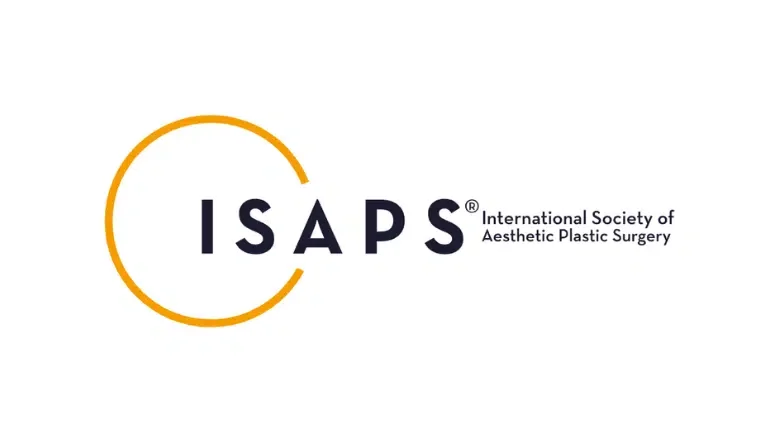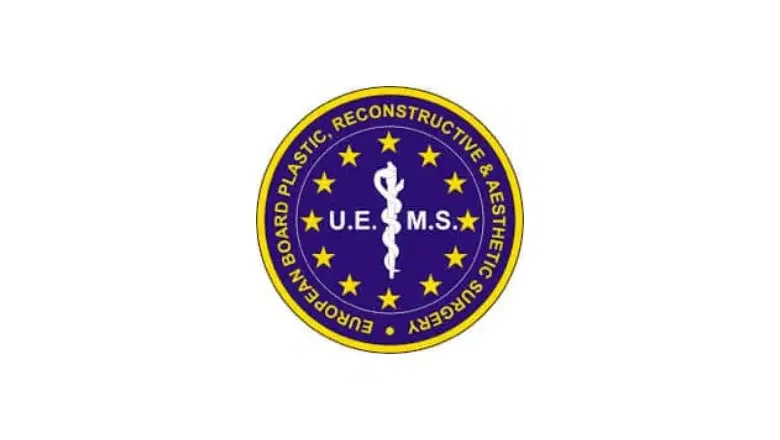The navel, or belly button, is often a small yet significant feature of the human body, contributing to both the aesthetic balance of the abdomen and one’s self-perception. For some people, the appearance of their belly button may cause discomfort or self-consciousness, particularly if they have an “outie” – a type of navel that protrudes outward. In contrast, an “innie” belly button is characterised by a deeper indentation and is generally considered more common and aesthetically pleasing. For those who wish to change the appearance of their belly button, a procedure known as umbilicoplasty offers a safe and effective solution.
This blog will delve into what umbilicoplasty is, how it works, and why someone might consider it to transform their outie into an innie. We’ll explore the procedure in depth, discussing how it can help you achieve your desired appearance, and what you can expect before, during, and after surgery.
RELATED: What Happens to the Belly Button in a Tummy Tuck?
Understanding the Anatomy of an Outie and an Innie
Before discussing the procedure itself, it’s important to understand what makes a belly button an “outie” or an “innie.” The navel is essentially the scar left behind when the umbilical cord is cut after birth. The shape and depth of this scar depend largely on how the umbilical cord heals. For some people, the healing process results in a concave depression – the innie. For others, excess tissue or a small umbilical hernia leads to a protrusion, known as an outie.
Outies are typically harmless, though they can sometimes be associated with a small hernia, where a bit of tissue or intestine pushes through the abdominal muscles. This is not usually dangerous but can contribute to the outward appearance of the navel. The shape of a belly button is determined largely by genetics and the way the scar tissue forms after the umbilical cord falls off in infancy.
While the appearance of an outie is perfectly natural and not inherently problematic, some people may prefer the look of an innie due to personal aesthetic preferences, societal beauty standards, or the desire for a flatter abdominal profile. An umbilicoplasty is a surgical option available to those who wish to make this change.
What is Umbilicoplasty?
Umbilicoplasty, often referred to as “belly button surgery,” is a cosmetic procedure that reshapes or repositions the navel. It can address a range of issues, from reducing the prominence of an outie to resizing or reshaping the belly button for a more balanced look.
The procedure is relatively straightforward and can be performed under local or general anaesthesia, depending on the complexity of the surgery and the patient’s comfort level. Typically, umbilicoplasty aims to create a more aesthetically pleasing, natural-looking innie.
This surgery is not only for transforming outies into innies; it can also be used to correct issues such as elongated navels, scarring from piercings or previous surgeries, and asymmetrical belly buttons. However, the focus here is on how umbilicoplasty can effectively convert an outie to an innie.
How Umbilicoplasty Converts an Outie to an Innie
The process of changing an outie to an innie through umbilicoplasty involves carefully removing the protruding tissue, sometimes repairing an underlying umbilical hernia, and reshaping the navel to create a concave shape. Here is a step-by-step breakdown of how the procedure typically works:
Consultation and Planning
Before surgery, the patient meets with the surgeon to discuss their goals, expectations, and any medical concerns. The surgeon will examine the navel’s anatomy and determine the best approach to achieve the desired look. At this stage, any concerns about hernias or other medical conditions that could influence the surgery are also addressed.
Anaesthesia and Preparation
On the day of surgery, the patient will receive either local anaesthesia (where the area around the navel is numbed) or general anaesthesia (where the patient is put to sleep for the duration of the procedure). The choice of anaesthesia depends on the complexity of the surgery and patient preference. The area around the navel is cleaned and prepared for the operation.
Incision and Tissue Removal
The surgeon makes a small incision around the navel. This incision is usually made within the natural folds of the belly button to ensure that any resulting scar is as hidden as possible. Once the incision is made, the surgeon removes excess skin, fat, or tissue that is causing the outie shape.
Hernia Repair (if needed)
If a small umbilical hernia is contributing to the outward shape of the navel, the surgeon may take this opportunity to repair it. This involves pushing the protruding tissue back into place and possibly stitching the abdominal wall to close any gaps.
Reshaping and Contouring
Once the excess tissue is removed and any hernia is repaired, the surgeon will reshape the remaining skin and tissue to form a natural-looking innie. This often involves securing the navel to the underlying muscle wall to create a deeper, concave shape.
Closing the Incision
After the navel is reshaped, the incision is closed with fine sutures, and a small dressing is applied to protect the area as it heals. The sutures may be dissolvable, meaning they do not require removal, or they may need to be removed in a follow-up appointment.
Postoperative Care
Once the surgery is complete, the patient is given instructions on how to care for the incision site to promote healing and prevent infection. They may need to avoid strenuous activities and follow specific area cleaning guidelines.
The entire procedure can take anywhere from 30 minutes to an hour, depending on the case’s complexity. Recovery time is generally quick, with most patients able to return to their regular activities within a week or two, although strenuous exercise and heavy lifting may be restricted for a few weeks.
Benefits of Umbilicoplasty
Choosing umbilicoplasty to change an outie to an innie comes with several benefits, both aesthetic and psychological.
- Improved Self-Confidence: Many people seek umbilicoplasty because they feel self-conscious about the appearance of their belly button. After the procedure, patients often report feeling more confident and comfortable in clothing that reveals the midriff, such as swimwear, crop tops, or fitted outfits.
- Aesthetic Harmony: An innie belly button can contribute to a flatter and more toned abdominal appearance, enhancing the overall look of the stomach area. The surgery can help create a more balanced, symmetrical appearance that aligns with the patient’s body goals.
- Minimal Scarring: Because the incision is typically hidden within the natural folds of the belly button, scarring is usually minimal and discreet. With proper aftercare, any visible scar fades over time and becomes almost unnoticeable.
- Quick Recovery: Umbilicoplasty is generally an outpatient procedure, meaning patients can go home the same day. The recovery period is relatively short, with most people resuming normal activities within a couple of weeks.
Risks and Considerations
Like any surgical procedure, umbilicoplasty does carry some risks. These can include infection, bleeding, scarring, or an unsatisfactory outcome if the desired shape is not achieved. However, complications are rare, particularly when an experienced plastic surgeon performs the surgery.
It is crucial to have a thorough consultation with your surgeon beforehand to discuss your expectations and ensure you are a suitable candidate for the procedure. An expert surgeon will offer realistic advice on what can be achieved and help manage any concerns about the surgery or recovery process.
It’s also important to have realistic expectations. While umbilicoplasty can greatly improve the appearance of your belly button, the outcome may vary based on individual anatomy, skin type, and healing process.
Recovery and Aftercare
Recovery from umbilicoplasty is typically straightforward, and most patients find the process manageable. During the first few days, swelling, bruising, and mild discomfort may occur around the belly button area. Over-the-counter pain relief can usually manage this discomfort, but your surgeon may also provide medication to ensure a comfortable recovery.
Patients are generally advised to keep the area clean and dry and to follow specific instructions for dressing changes. They should also avoid activities that put pressure on the abdominal area, such as heavy lifting, intense exercise, or bending over, until the incision has fully healed.
Follow-up appointments are usually scheduled to monitor healing and remove any non-dissolvable stitches. Full recovery can take several weeks, but most people can return to normal activities within two weeks of surgery. Once any swelling has fully subsided, the final results of the surgery are often visible within a few months.
Is Umbilicoplasty Right for You?
An umbilicoplasty is an excellent option for individuals who are dissatisfied with the appearance of their outie and wish to achieve an innie. If you are in good health, have realistic expectations about the outcome, and are looking for a quick, minimally invasive procedure to enhance your belly button’s appearance, then umbilicoplasty could be a great choice.










